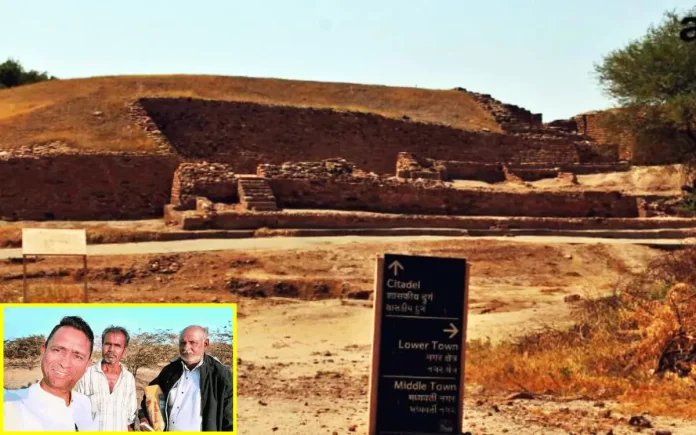Ahmedabad: Imagine embarking on a treasure hunt for gold and stumbling upon something even more remarkable—a 4500-year-old civilization! That’s precisely what happened to villagers in Rajkot, who, in their pursuit of gold, uncovered a Harappan site near Dholavira.
The Harappan Civilization, flourishing during the Bronze Age in South Asia, endured from 3300 BCE to 1300 BCE. Its mature phase, spanning from 2600 BCE to 1900 BCE, left behind a rich cultural legacy.
Initially rumored to hold hidden gold, Lodrani village in Gujarat became the center of attention for treasure hunters five years ago. However, what they found, and what archaeologists later confirmed, was a fortified settlement from the Harappan era.
Lead archaeologist Ajay Yadav explained, “Villagers believed there was a medieval fortress and buried treasure. But when we examined the site, we found a Harappan settlement where life was flourishing some 4,500 years ago.”
Collaborating with his professor Damian Robinson from Oxford’s School of Archaeology, Yadav’s team made groundbreaking discoveries. Contrary to previous assumptions, Lodrani revealed architectural details akin to those found in Dholavira.
“Our most important observation is that this site and Dholavira both depended on the sea. As it’s so close to the Rann (desert), it can be safely presumed that at that time what became a desert later must have been navigable,” noted Yadav.
This site was discovered in January and named Morodharo. The site boasts a fortified settlement, burial cairns, and a wealth of artifacts, including Harappan pottery and terracotta cakes. These findings bear striking similarities to artifacts unearthed in Dholavira.
Ultimately, the villagers’ quest for gold led to the discovery of a priceless piece of history, shedding new light on the ancient Harappan civilization.
Below are the characteristics of the Morodharo Harappan site:
- Morodharo is a fortified settlement of the Harappan era, with the fortification measuring 102 m to the west and 58 m north to the south. The thickness of the wall is 3.3 m on average.
- Morodhara has a 10×10 m platform on the southwest side and a well on the northeast side.
- Burial cairns have been found at Morodharo. A cairn is an intentionally constructed mound of stones, typically created for marking a location or serving as a burial mound.
- Harappan pottery with perforated jar sherds, reserved slipware, and terracotta cakes have also been unearthed.
- All these objects bear a notable resemblance to those discovered in Dholavira.



